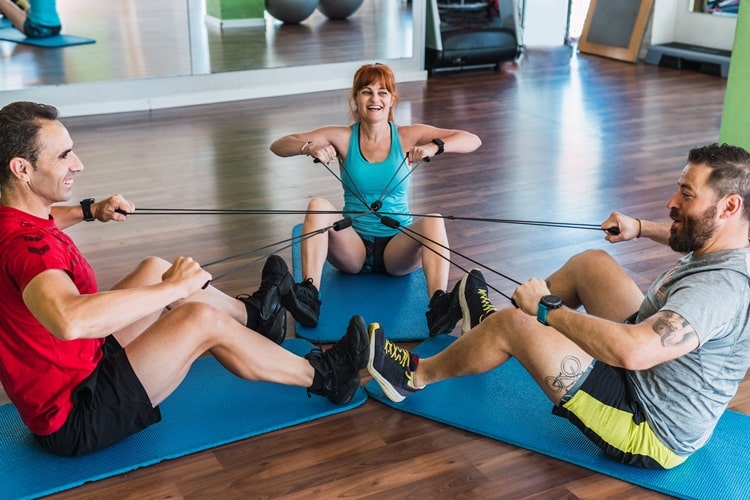For those who need to go through physiotherapy, there are many rigorous exercises involved. All of this is to help your body recover from whatever alignment it might be suffering from.
It takes an active approach to help to restore function and movement within the body. That’s why the name combines Physio and Therapy as a physical activity to provide the necessary therapies for recovery.
Why is physiotherapy so important?
It’s a slow and sure approach to getting your body back to peak condition. Initially utilized by athletes as a way to improve their recovery periods and keep them in top performance, physiotherapy and, more specifically, physio led strength and conditioning can help many people who may have suffered from an illness or accident and need that iterative approach to a full recovery.
This is because physiotherapy without physio strength and conditioning will slow down the recovery process, as it’s only exercises consisting of aerobics and improving your range of motion, without doing anything for the muscles of your body.
Why is strength conditioning important?
If you want to recover successfully, you want to combine your physiotherapy with strength and conditioning. This is where we focus our body to build up muscle mass and muscle endurance.
So it’s not just about growing those biceps, but this muscle mass and muscle fibre improvement will actually help recovery because it’ll make it easier for you to handle the physio led strength and conditioning recovery.
With stronger muscles, you’ll also be able to improve your motor skills, speed and agility. This will then give you the confidence you need to continue pushing yourself either as an athlete or with your recovery. With this step by step strength and conditioning combined with the rest of physiotherapy, you will be well on your way out.
Not surprisingly, with better muscle tone and stability through strength and conditioning, you’ll be able to prevent injuries during your journey with physio led strength and conditioning. Your body will have the ability to perform better, and react to things faster, thus ensuring that you don’t strain yourself or pull a muscle or end up causing yourself some type of severe injury.
How does it work?
It’s all about repetitive movements done correctly. Strength and conditioning involve
Conditioning the body to do workouts and strength improvements correctly and repetitively. You want to push the muscles to their limit, just below them being strained incorrectly or causing any injury. It’s about exhausting the muscles through the movements, and when recovered, you will have stronger motion and strength.
You’ll also help to improve your overall health simply through these exercises as the fat will be converted into muscle, and that also improves your recovery rate. Since you’ll be guiding your body towards better cardiovascular health through the weight loss and conditioning of your body, and because your body will actually end up looking better through strength and conditioning, you’ll be adding ancillary components to your recovery.
Building a positive and healthy body image for yourself will improve your mood, releasing endorphins and helping to motivate you with more physio led strength and conditioning.
There are some limitations
Keep in mind, that with strength and conditioning; there are diminishing returns. When you’re first starting out strength and conditioning physiotherapy, you’ll see results much quicker than a few weeks and a few months down the line.
That doesn’t mean you’re done, but that means that there’s less that needs to be done as your strength and conditioning have helped your body hit a certain level of physical fitness. You can then switch to maintenance mode and keep yourself fit and healthy even after the strength and conditioning physiotherapy sessions are done.
Also, remember that you’re in a state of recovery, and although pushing yourself can be beneficial, it’s important to do physio strength and conditioning in front of professionals who can check that you’re doing the correct form and handling the right types of exercises and weights based on your overall mental and physical health.
If you end up doing strength and conditioning physiotherapy without any type of professional, you run the risk of causing yourself injury or doing exercises that aren’t optimal for your condition.
Strength and conditioning are usually customized per person to give them the maximum benefit. However, suppose you don’t have someone to help build out this regime.
In that case, you’ll be simply wasting energy and not building up your strength, performance, agility, confidence, flexibility and stability, or you’ll be doing it at a much slower pace.
Just remember that this is always a good and positive direction you’re taking, and if you have the opportunity for any type of physiotherapy or physio led strength and conditioning, you should always take that option.




